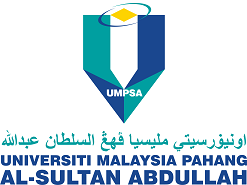Electronic Submission in Construction: Government Approval Practice and Potential Issues in Malaysia
DOI:
https://doi.org/10.15282/construction.v4i1.9890Keywords:
Construction industry, Construction approval, Approval process, Submittals, Electronic submissionsAbstract
Post-COVID-19 has strongly impacted the construction industry worldwide; many parties took alternatives to facilitate the relatively overdue work arrangements. The Malaysian construction industry has been directly affected and has had to increase the adoption of One-Stop Centre (OSC) electronic submissions. According to the Malaysian online system submission policies, it is necessary to obtain construction approval from the OSC through the implementation by town councils. Not understanding the process and documents involved in this procedure might result in ineffective submissions. Hence, the study objectives are to identify: 1) The current submission process and documents for construction approval to town councils, and 2) Issues related to the e-submission process. Semi-structured interviews were conducted with individuals from twenty town (20) city councils in Malaysia to achieve those objectives. The results indicate that the general process includes submitting the required documents through the OSC, validation of submittals, and meeting approvals. The required documents include planning permissions, drawings, engineering plans, environmental management plans, landowner documents, and approvals by other government agencies. Finally, the issues with the e-submission include technical problems and the lack of experience of all involved stakeholders. These findings can be used by policymakers to improve the submission system and industry practitioners in acquiring construction approvals.
Downloads
References
S. M. Kamaruddin, R. M. Rosmi, F. M. Halil, A. Misni, and M. A. Marzukhi, “User awareness, impediments and proposed improvements to the one stop centre (OSC) online 3.0 system. Case study: Municipal council of Subang Jaya, Selangor, Malaysia,” Planning Malaysia, vol. 18, no. 11, pp. 259–270, 2020.
J. L. W. Fatt, One Stop Centre (OSC) online submission, 2021. [Online] https://ipm.my/wp-content/uploads/2021/09/One-Stop-Centre-OSC-Online-Submission.pdf
A. M. Farouk, and R. A. Rahman, “Integrated applications of building information modeling in project cost management: A systematic review,” Journal of Engineering, Design and Technology, June 2023.
M. A. Marzukhi, O. L. H. Leh, Y. A. Abdullah, N. S. Khalid, H. Zainol, and R. A. A. Apet, “The development control process for residential and serviced apartments in Shah Alam, Selangor,” Engineering Journal, vol. 25, no. 1, pp. 199-209, 2021.
I. Kim, J. Choi, E.A.L Teo, and H. Sun, “Development of K-BIM e-Submission prototypical system for the open BIM-based building permit framework,” Journal of Civil Engineering and Management, vol. 26, no. 8, pp. 744-756, 2020.
S.A. Samad, A.N. Harun, M.N.M. Nawi, and N.A. Haron, “The potential use of BIM through an electronic submission: A preliminary study,” Malaysian Construction Research Journal, vol. 3, no. 1, pp. 82-96, 2018.
A.H. Ariff, S. Samsudin, and M.H. Ahmad, “Re-appraising land development approval procedure through surrender and re-alienation mechanism in Johor,” Planning Malaysia, vol. 19, no. 4, pp. 83-95, 2021.
E.D. Ismail, S.Y. Said, M.K.A. Jalil, and N.A.A. Ismail, “Benefits and challenges of heritage building information modelling application in Malaysia,” Environment-Behaviour Proceedings Journal, vol. 6, no. SI4, pp. 179-184, 2021.
J.F. Gubrium, J.A. Holstein, A.B. Marvasti, and K. D. McKinney, The SAGE handbook of interview research: The complexity of the craft, SAGE Publications, Inc., 2012.
B. Gillham, Research interview, Bloomsbury Publishing, 2001.
H.A. Rani, A.M. Farouk, K.S. Anandh, S. Almutairi, and R.A. Rahman, “Impact of COVID-19 on construction projects: The case of India,” Buildings, vol. 12, no. 6, p. 762, 2022.
A.M. Farouk, A.Z. Zulhisham, Y.S. Lee, M.S. Rajabi, and R.A. Rahman, “Factors, challenges and strategies of trust in BIM-Based construction projects: A case study in Malaysia,” Infrastructures, vol. 8, no. 1, p. 13, 2023.
V. Braun, and V. Clarke, “Using thematic analysis in psychology,” Qualitative Research in Psychology, vol. 3, no. 2, pp. 77-101, 2006.
N. King, Using templates in the thematic analysis of text, in C. Cassell and G. Symon, ed., Essential Guide to Qualitative Methods in Organizational Research. London: Sage, pp. 257-270, 2004.
A.M. Farouk, L.M. Yusof, R.A. Rahman, and A. Ismail, Sustainable transportation indicators for urban areas: A Systematic review,” in International Conference on Structural Engineering and Construction Management, pp. 549-558, Springer, Cham, 2024.
A.R. Radzi, A.M. Farouk, N.S. Romali, M. Farouk, M. Elgamal, and A.R. Rahman, “Assessing environmental management plan implementation in water supply construction projects: Key Performance Indicators,” Sustainability, vol. 16, no. 2, p. 600, 2024.
A.M. Farouk, R.A. Rahman, and N.S. Romali, “Non-revenue water reduction strategies: A systematic review,” Smart and Sustainable Built Environment, vol. 12, no. 1, pp. 181-199, 2023.
A.M. Farouk, R.A. Rahman, and N.S. Romali, “Economic analysis of rehabilitation approaches for water distribution networks: Comparative study between Egypt and Malaysia,” Journal of Engineering, Design and Technology, vol. 21, no. 1, pp. 130-149, 2023.
M. Basadur, T. Basadur, and G. Licina, Organizational development, In Handbook of Organizational Creativity Academic Press, pp. 667-703, 2012.,
E. De Valck, and R. Cluydts, “Slow‐release caffeine as a countermeasure to driver sleepiness induced by partial sleep deprivation,” Journal of Sleep Research, vol. 10, no. 3, pp. 203-209, 2001.
Downloads
Published
Issue
Section
License
Copyright (c) 2024 The Author(s)

This work is licensed under a Creative Commons Attribution-NonCommercial 4.0 International License.




